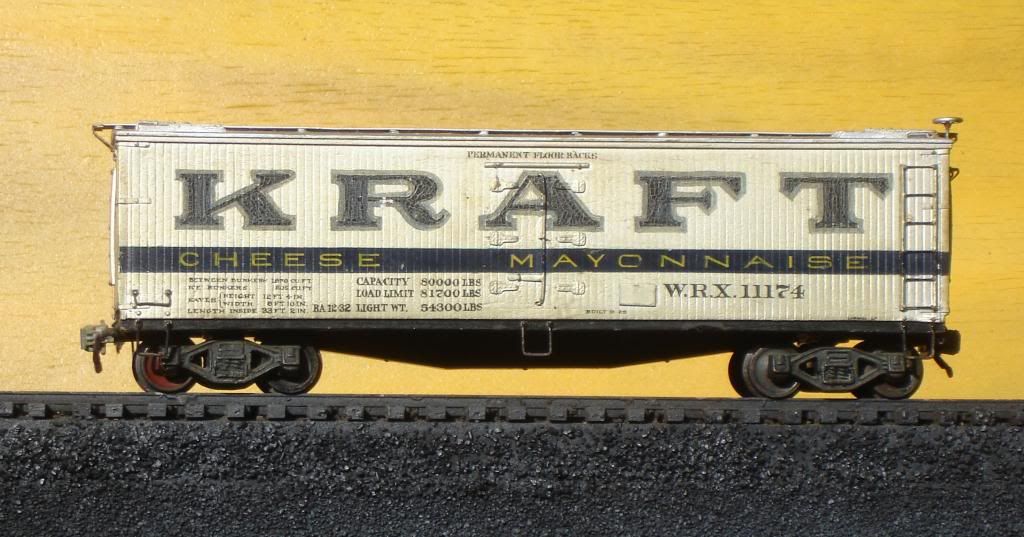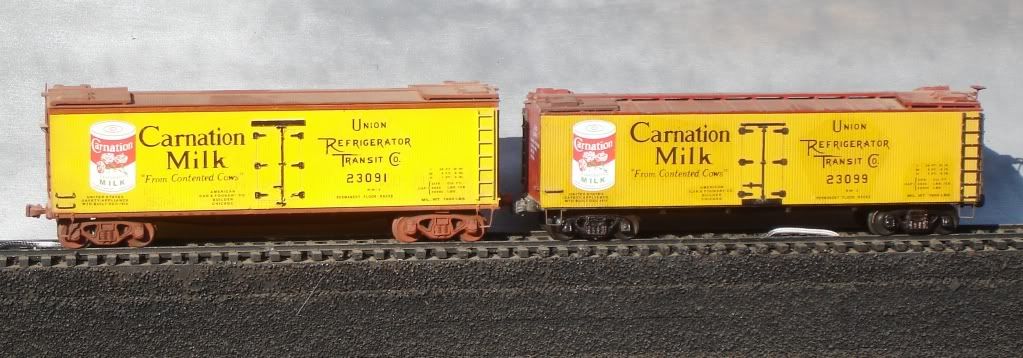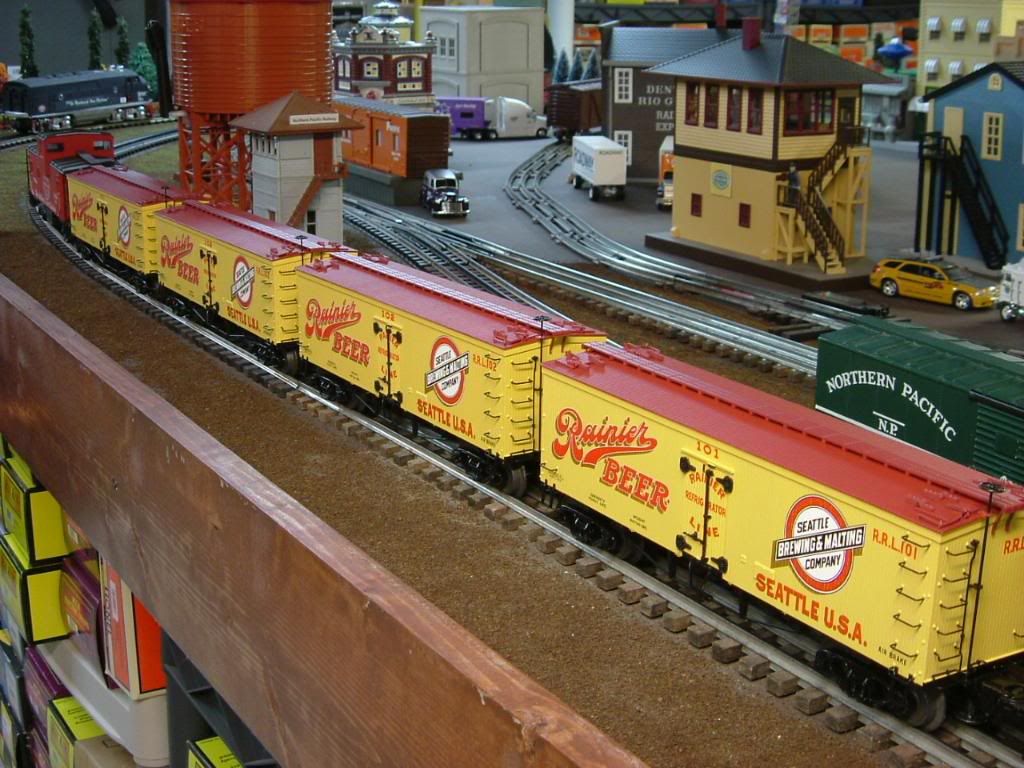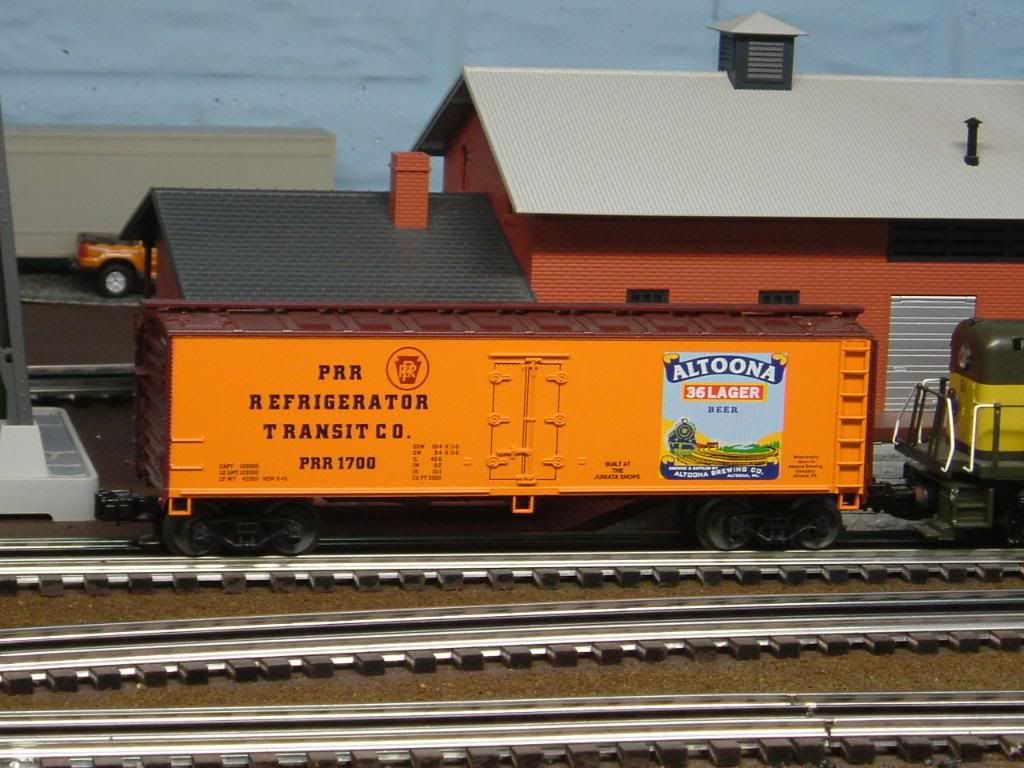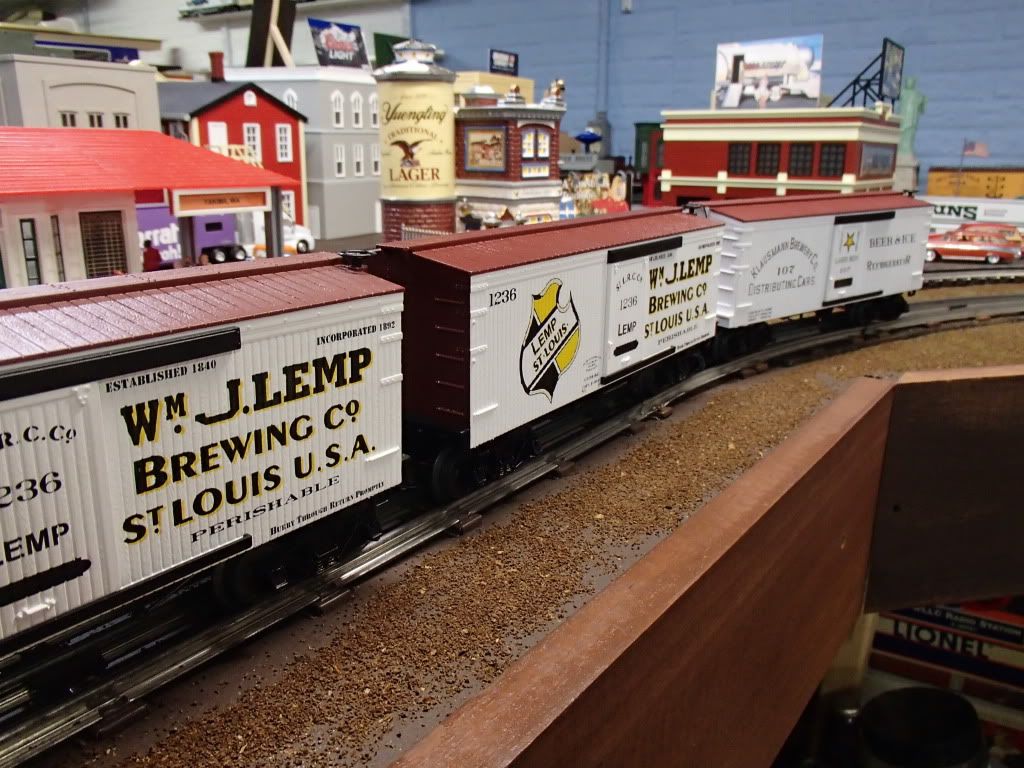The invention and improvement of the refrigerator car were important elements in the development of the American economy in the 20th century. The transportation of fresh foods by refrigerator car was essential to the increased variety of foods on American tables in the 20th century. Refrigerator cars and fast rail service linked farms, orchards, sea ports and packing plants allowing farmers, ranchers, importers, fisherman and packers to reach distant markets with their products and city dwellers to enjoy fresh fruit, vegetables, milk, meat and fish at affordable prices. We have a great variety of models available in O scale today that depict the refrigerator car as it was improved and size, materials and technology from the early to the late 20th century. In this installment of the O Scale Freight Car Guide we will take a look at the O scale wood side and express refrigerator cars.
36 Foot Wooden Refrigerator Cars
In 2003 Atlas produced the first of their 36 foot refrigerator cars. The model is based on a car type built by General American in 1925 for Cudahy Packing. It features simulated wooden sides and ends and a wooden roof. The Atlas models have been used to depict cars decorated for a wide variety of meat packers and brewers as well as class 1 railroads.

MTH introduced their own 36 foot refrigerator car in the 2004 Volume 1 catalog. Like the Atlas model it depicts all wooden exterior constriction and has worn a wide variety of paint schemes.
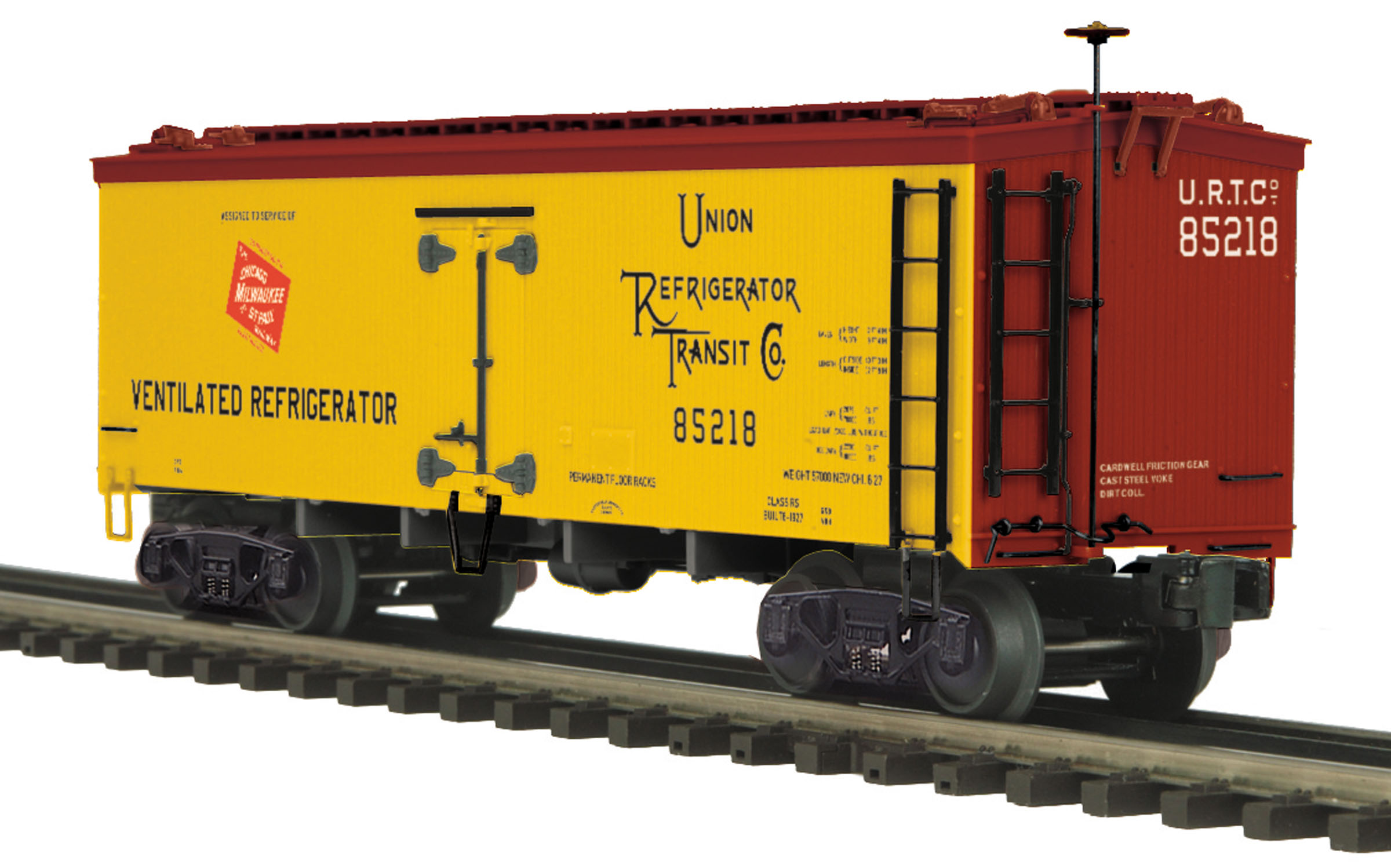
40 Foot Wooden Refrigerator Cars
By the World War I era forty foot refrigerator cars had become the standard size for new construction. We have several O scale models to chose from to depict forty foot cars as built in the late 1910's, 1920's and into the 1930's. These cars could be seen on American railroads well into the post-WW II era.
The Atlas 40 foot wood reefer model is based on a prototype built by Pullman in 1930. It features wooden ends and sides, a wood roof and a stout USRA style underframe. The model also has opening roof hatches and side doors. This was among the first models introduced by Atlas upon their return to O scale. It's level of detail and great popularity helped to push other manufacturers to produce ever more detailed O scale freight cars.


The Atlas 40 foot rebuilt refrigerator car was introduced in 2004. It depicts the earlier cars as rebuilt in the late 1930s and 40's with a metal clad roof and raised hatch platforms.

K-Line K742 is a highly detailed model of a 40 foot refrigerator car with wood ends, roof and sides. It was also offered in a factory 2 rail configurations as the KS742. These models have interior ice bunkers and those depicting cars in meat service have appropriate overhead rack details. Production continued into the K-Line by Lionel era.
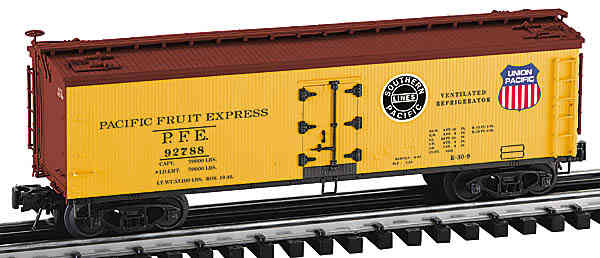

40 foot wood side with steel ends
Refrigerator car construction in the 1930s began to follow box car construction with the increasing use of steel exterior components for greater strength and reduced maintenance. Wooden sides continued to be utilized due to their better thermal insulating properties. After the introduction of all steel reefers in the late 1930s wood side construction made a come back in the 1940s during World War II in order to save steel. Two moderately detailed O scale refrigerator cars are available depicting this transitional period in construction techniques.
The K-Line K762 40 foot reefer has a Murphy rectangular panel roof and 4/4 dreadnought ends. Production continued under the K-Line by Lionel banner.
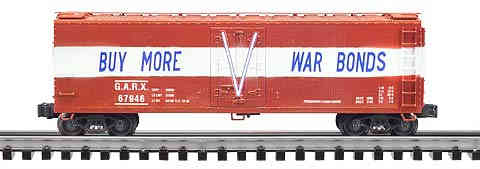
Weaver's 40 foot wood sided refrigerator car is based on the former Crown tooling. It has a Murphy rectangular panel roof and 4/4 ends.

Milk Reefers
Milk reefers were insulated cars with internal tanks to hold fresh milk shipped to cities from surrounding farm areas. Milk cars typically lacked ice bunkers since further refrigeration in route was not needed. Milk cars often ran at the head end of local passenger trains or in trains on passenger schedules and had special trucks along with steam and communication lines for passenger service.
The Lionel Standard O milk car is a highly detailed model based on a General American prototype. It features wood sides and ends, a radial roof and internal tanks. It was introduced in the Lionel 2002 Volume I catalog.

Express Reefers
Express refrigerator cars were use to handle the most perishable foods and move them in fast long distance passenger trains or as special trains running at passenger train speeds.
The Atlas 53' 6” General American express refrigerator car was introduced in 2007 and bears a strong resemblance to its shorter milk reefer relatives. It depicts the prototype with simulated wood sides and ends, a radial roof, commonwealth express trucks and opening doors and roof hatches.

MTH came to market with their model of the Pennsylvania R50B in the 2004 Volume II catalog. It features express trucks, opening doors and ice hatches and Kadee mounting pads. It has been made in a variety of paint schemes for the Pennsylvania and other railroads.

The Third Rail 54' steel express refrigerator car depicts post-WW II construction with 3/3 improved dreadnought ends and a plug type door.

Stay tuned for an upcoming installment of the O Scale Freight Car guide where we will take a look at steel side ice bunker reefers, modern bunkerless refrigerator cars and mechanical reefers.
As always, your comments or corrections are most welcome. And let's see photos of your wood side and express refrigerator cars.
Information on other types of O scale freight cars can be found at the link below.
https://ogrforum.com/t...le-freight-car-guide



